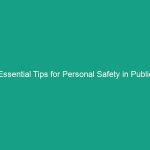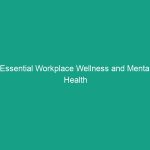Good Morning Team!
Today, we’re diving into an incredibly important topic: Which Safeguard Makes the Difference? Essential Tips for HSE Success. Understanding the Best Practices in health, safety, and Environment (HSE) is crucial for not only compliance but also for protecting each other in our daily operations. Let’s explore how we can enhance our Workplace Safety measures together!
Understanding Which Safeguard Makes the Difference
The term “safeguard” refers to any measure, protocol, or tool that helps prevent accidents, injuries, or environmental harm in the workplace. Safeguards can include everything from Personal Protective Equipment (PPE) to comprehensive Safety Training programs. Understanding which safeguards make the difference is essential because it directly impacts our ability to perform our jobs safely and efficiently.
Many employees might think of Safety as merely wearing a helmet or gloves, but it encompasses a much broader scope, including risk assessments, emergency plans, and the culture of safety within the organization. Misconceptions can lead to complacency, so it’s vital we clarify these points!
Key Hazards, Risks, and Safety Considerations
Identifying Hazards is the first step toward effective risk management. Here are some common hazards you may encounter:
- Physical Hazards: These include machinery, vehicles, and slips, trips, and falls.
- Chemical Hazards: Exposure to harmful substances can lead to serious health issues.
- Biological Hazards: These involve bacteria, viruses, and other pathogens.
- Ergonomic Hazards: Poor workstation design can lead to musculoskeletal disorders.
Ignoring these hazards can lead to severe consequences, including injuries, financial loss for the company, and decreased morale among employees. By prioritizing safety, we not only comply with Regulations but also build a positive workplace culture.
Best Practices, Procedures, & Actionable Advice
Now that we understand the importance of safeguards, let’s talk about Best Practices that you can implement immediately:
- Always Wear Your PPE: Make it a habit to wear the necessary protective equipment before starting any task.
- Participate in Safety Training: Engage fully in all training sessions. They provide essential knowledge about the risks you may face and how to deal with them.
- Report Unsafe Conditions: If you see a hazard, report it immediately. Proactive communication is a cornerstone of Workplace Safety.
- Conduct Regular Inspections: Regularly check your work area for potential hazards and ensure that safety equipment is in good condition.
Let’s consider a real-world incident: at a manufacturing plant, a worker ignored a malfunctioning machine because it had not caused issues in the past. Unfortunately, this complacency led to a significant injury. This case highlights the importance of continuous vigilance and adherence to safety protocols.
Regulations, Standards, and Compliance
Compliance with health and safety regulations is non-negotiable. Standards set by organizations such as OSHA (Occupational Safety and Health Administration) and ISO (International Organization for Standardization) provide frameworks for safeguarding employees. Here’s why compliance matters:
- Legal Protection: Following regulations helps protect the company from legal repercussions.
- Employee Trust: Adhering to safety Standards builds trust between employees and management, creating a safer workplace.
- Operational Efficiency: A safe work environment leads to fewer disruptions and higher productivity.
Remember, safety is not just a checkbox—it’s a commitment we all share.
Employee Engagement & Discussion
Now, I’d like to hear from you. What safety challenges have you encountered related to our current safeguards? How can we improve our safety practices together? Feel free to share your thoughts and experiences, as open dialogue is key to enhancing our safety culture.
Conclusion & Key Takeaways
In conclusion, understanding which safeguards make the difference is essential for our collective safety and success in the workplace. Remember:
- Identifying hazards is the first step toward mitigation.
- Engagement in safety training and compliance with regulations is crucial.
- Communication and proactive measures can prevent accidents.
Let’s all commit to prioritizing safety in everything we do. Thank you for your attention and your dedication to making our workplace a safer environment!


